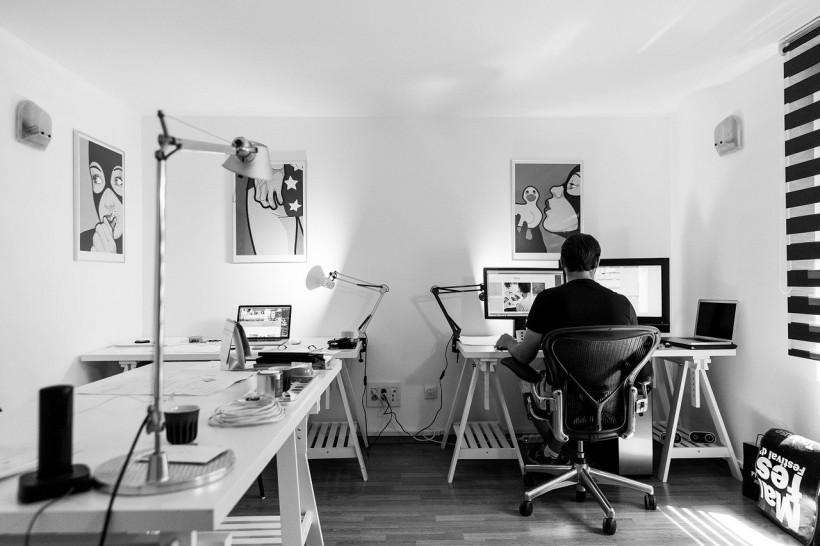
Are you thinking of changing and getting involved with the layout designing of your office? Then you're on the right article! Read more to find out how to transform your office design.
Here are 7 tips to guide you in modifying your office:
1. Consider the Work
Your office layout will depend on the type of work you do. Work that requires individuality and independence should reflect through separators and private cubicles, while open styles and spaces are best for jobs that encourage teamwork.
For example, work that requires autonomy includes:
● Human Resource
● Tax and Auditing
● Information Technology
● Research and Development
● Freelance Media
On the other hand, work that needs cooperation are:
● Police or Detective Work
● Chefs or Kitchen Staff
● Natural Sciences Team
2. Review the Organizational Chart
Especially if overlapping departments share the office, spaces should be designed to get to their respective persons quickly. Different positions handle different responsibilities and projects. Some may even be confidential and not intended for other employees to see. This is why it's also important to consider how cubicles will be placed in the same office or floor.
Take into account divisions and job functions. It's preferred to let employees of the same level share space to have more opportunities for interaction. This is because same-level employees go through similar challenges and can brainstorm together, leading to camaraderie and teamwork development.
3. Go for High Ceilings
Aside from creating the illusion of more space in the room, studies show that high ceilings are often connected to free thinking. High ceilings also give way to excellent ventilation and more decor space!
This feeling is often referred to as the "Cathedral Effect," which refers to people's engagement with either high or low ceilings. The high ceilings or "Cathedral" encourages abstract elaboration that stirs up creativity and wards of the feeling of being constrained, a direct opposite of low ceilings or "Chapels."
4. Strive for the Best Lighting
Poor lighting cause eye strain, fatigue, and other problems that manifest in mental and physical ways that can affect productivity. In any design, natural light is always the best option. Aside from improving people's circadian rhythm, increasing focus, and stimulating happiness, natural light is free.
When natural light is not available, say that your work schedule is the graveyard shift. LED lights have become the go-to over the years. Although LED light is more expensive than fluorescent lights, it is recommended for being energy-efficient and will actually save money for the office in the long run.
5. Paint the Walls
Color is important as they elicit specific emotions. When it comes to wall paints, white is the safest bet. However, it's not the best for the workspace. This includes any variety of white such as off-white and gray. The sterile, dull color makes people feel lazy, and that's not a good thing for the workplace. It also reflects harsh reflections and glare that are not healthy for the eyes. Another color you should be careful of is yellow, as using too much of it causes headaches.
So what color is advised? Here are some fun color choices you can pick from:
● Blue for creativity and effectivity. It's also calming and soothing, which promotes serenity in the workplace.
● Red for concentration and attention to detail. Just be sure that it's not too bright, so it doesn't become intimidating.
● Green for inspiration and reduced anxiety. Like blue, green nurture harmony while fostering innovative thinking.
A tip: You can also pick scents appropriate for the space. Similar to how the color of the office affects an individual's emotions, how the room smells also influences productivity and mindset.
6. Choose Comfortable Furniture
As you'll spend most of your day at the office, investing in quality furniture that also promotes better health is important. Comfortable furniture helps employees do well in their jobs.
It's important to select ergonomic desks and chairs that will help employees improve their posture. Choosing height-adjustable furniture is recommended. If you're working remotely, use this guide to understand ergonomics for home offices.
Furthermore, if you have a big office with lots of staff, you might want to think about getting employee lockers to avoid clutter in the workplace. Having a designated place to store their personal items, coats, or perhaps even their uniforms can help employees feel valued and safe.
7. Put Some Art and Allow Personal Items
Arts don't only add style and flair to your office. Besides being aesthetically pleasing, arts are found out to help in developing ideas and inciting creativity. Taking time to select the appropriate art also gives energy to workers, compared to a space that only fits the industrial environment and only allows absolutely necessary things.
Letting employees add their own items can increase their motivation as well. Allowing employees to personalize their space makes them feel more comfortable and reduces their stress.
Get Your Dream Office
There are many other factors you can consider when designing your office. At the end of the day, it's you who'll know what's best for you when you take into account the design process and the budget that needs to go along with it.
* This is a contributed article and this content does not necessarily represent the views of sciencetimes.com












![Sat-Nav in Space: Best Route Between Two Worlds Calculated Using 'Knot Theory' [Study]](https://1721181113.rsc.cdn77.org/data/thumbs/full/53194/258/146/50/40/sat-nav-in-space-best-route-between-two-worlds-calculated-using-knot-theory-study.png)

